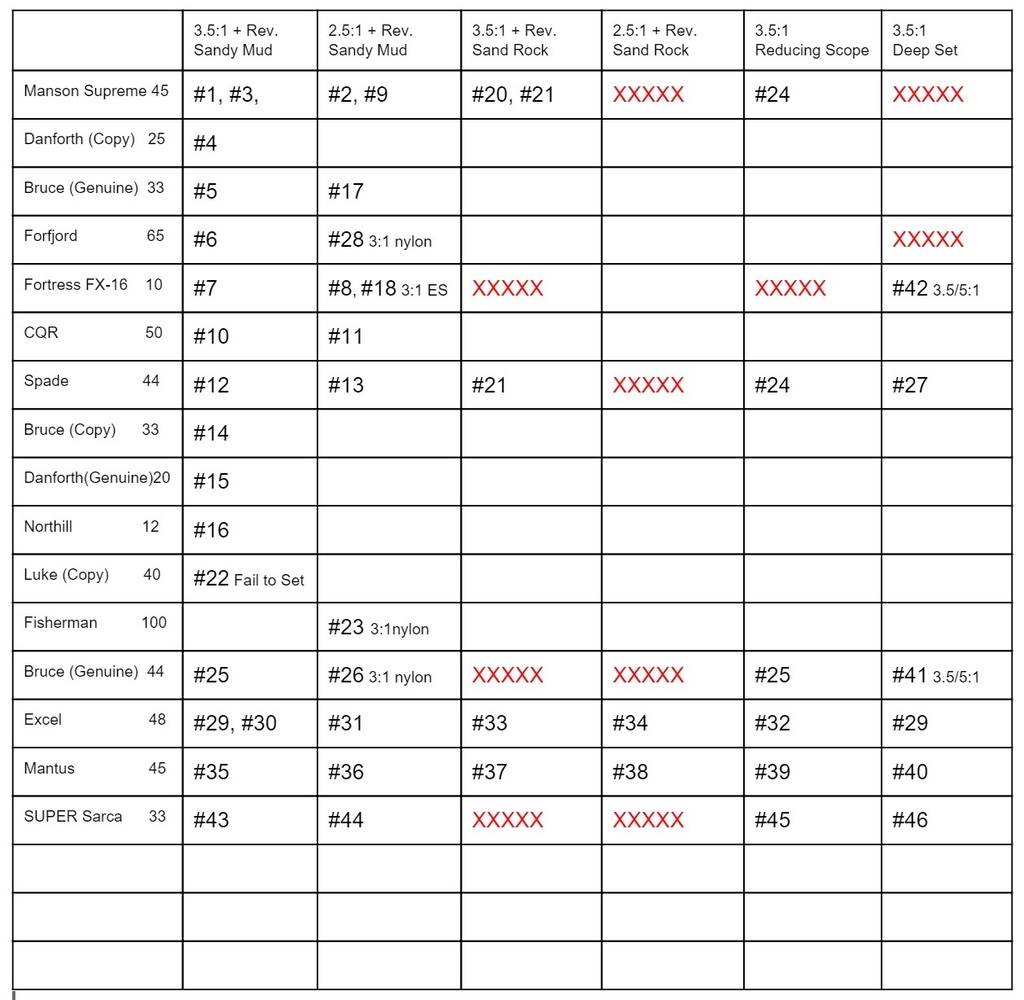Great work Steve. Please don't stop there though. We are all agog at waiting to see the ones without the trip slot bolted off. No pressure though. Take time for a drink and a sandwich.
Actually that last test was really good in the way it did illustrate that given a decent (even quite conservative), rode length, and enough force, the anchor will totally bury, and with the minimal disturbance to the sea floor as claimed. That should make Eric happy.
Also the way the shape (convex), and the slots do help with substrate shedding on the way up = less hosing down and muck in the anchor well.
The force needed to break it out also is the reason why I so much like the slot open, because you could see in that video very clearly, that had the slot not been blanked off with the bolt, you could, (as I often do when really stuck in deep), move slowly forward, and deliberately drag that shackle down to the fluke end before the shank has lifted clear of the bottom, and break it out with much less strain on everything.
Eric one thing I think you might have noticed however in that video, is the floatation holding up the camera, especially now Steve has it tethered at fluke and shank ends, does hold the anchor somewhat artificially in the upright position - you can even see it waggle a bit from side to side as it goes down, so it is landing on it's bum somewhat more reliably than it would without the camera floatation. Not an issue, as it sets so quick anyway, but it is being influenced by the camera tackle in this instance. Believe it or not, I suspect if it was free to land on its side and flop over more, it would dig in even quicker, as held upright, it is able to skin along on its bottom just a tad, rather than knifing straight in.
Watch this space guys...





